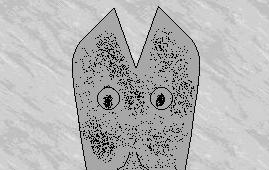Americans are perverse. There is no other way to explain it.
They have created a sport based on slow rhythms, the building of tension over a long period of time, often hours. In baseball, there is no greater drama than a pitcher and a batter staring each other down in the bottom of the ninth with the game on the line. The longer this drama can be sustained, the greater the payoff when the ball is finally delivered.
I used to hate baseball. I used to think it was more boring than a Tory leadership convention. It took 10 years of effort from a baseball fan and a couple of pennants before I was finally seduced by the friendly, almost intimate pace of the game. And now that I’m at peace with the natural beauty of the sport, what do the league presidents want to do?
They want to speed up the games.
There may be valid reasons for this change: kiddies do have to be home before two in the morning, and beer advertisers need more airtime to show those spots they’re always developing. Still, consider what we stand to lose:
BEFORE THE CHANGE: The pitcher receives the ball from the catcher and looks in for the signs. He shakes the first sign off. He shakes the second sign off. He steps off the rubber and picks up the rosin bag to wipe the sweat off his hand. He slams the rosin bag down on the mound. He steps back onto the rubber and adjusts his cap. He shakes off the first new sign. He nods in agreement with the second new sign. The pitcher winds and delivers. The batter gets a base hit.
AFTER THE CHANGE: The pitcher receives the ball from the catcher and looks in for the signs. With a shrug, he winds and delivers. The batter hits a home run.
BEFORE THE CHANGE: The batter steps into the batter’s box. He turns his head and spits. He looks at the pitcher. He waggles his bat. He raises his hand to ask for time. When it is granted, he steps out of the batter’s box. He pretends to remove something from his eye. He adjusts his jock strap. He steps back into the batter’s box. He looks at the pitcher and kind of spits out of the side of his mouth. He waggles the bat. The pitcher winds and delivers. Swing and a miss.
AFTER THE CHANGE: The batter steps into the batter’s box. The pitcher winds and delivers. Swing and a miss.
BEFORE THE CHANGE: After a home run, the catcher trots out to the mound to have a chat with the pitcher. The umpire strolls out to break it up. The first pitch to the next batter is a ball. The shortstop wanders over to the mound to give the pitcher some advice. The second baseman joins them. The umpire ambles out to break it up. The next pitch is a ball. The pitching coach slowly makes his way out to the mound on unsteady legs to point out a flaw in the pitcher’s delivery. The umpire boldly walks out to the mound to break it up. The next pitch hits the batter. The manager jogs outto the mound to ask about Aunt Olivia’s urinary infection. There is much milling about. Just as the umpire threatens to come out and share his opinions on modern medicine, the manager asks the pitcher for the ball and signals for a relief pitcher.
AFTER THE CHANGE: After a home run, the manager runs onto the field and yanks the pitcher.
BEFORE THE CHANGE: With a man on, the pitcher steps off the rubber and lobs the ball to first. The runner gets back safely. The first baseman tosses the ball back to the pitcher. The pitcher looks in for the signs. He steps off the rubber and quickly throws the ball to first. The runner gets back safely. The first baseman tosses back the ball. The pitcher looks in for the signs. He turns his head to glare at the runner, who scamper s back to the bag. The pitcher steps off the rubber, turns towards first, then steps back on the rubber. He looks at the catcher, then quickly steps off the rubber. the runner gets back safely. The first baseman throws the ball to the pitcher. The pitcher throws to first; the ball is returned to him. The pitcher throws to first; the ball is returned to him. The pitcher throws to first; the ball is returned to him. The pitcher comes to the plate, the ball sailing over the catcher’s head — the runner goes to third on the wild pitch.
AFTER THE CHANGE: With a runner on, the pitcher steps off the rubber and hurries a throw to first that ends up in the opposing team’s dugout — the runner takes third on the error.
Of course, baseball purists (those 80 and 90 year-olds who may actually have watched the game when it could reasonably have claimed to be “pure”) will argue that these changes are minor compared to expansion, the introduction of the designated hitter or salary arbitration. Still, us youngsters have to get our nostalgia where we can.


